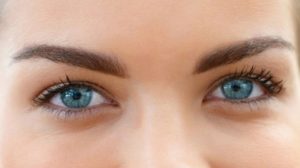 According to the National Eye Institute, some 135 million people worldwide have an eye condition that causes “low vision.” Low vision isn’t simply what happens normally to our vision as we age, but can be the result of certain eye diseases and other health conditions that cause irreversible damage — from cataracts and glaucoma to diabetes and age-related macular degeneration.
According to the National Eye Institute, some 135 million people worldwide have an eye condition that causes “low vision.” Low vision isn’t simply what happens normally to our vision as we age, but can be the result of certain eye diseases and other health conditions that cause irreversible damage — from cataracts and glaucoma to diabetes and age-related macular degeneration.
Eyesight loss that can result in a diagnosis of low vision includes:
Central vision loss
Creates a blur or blind spot in the center of your vision
Peripheral vision loss
Makes it difficult or impossible to see to the sides or above and below the middle line of sight
Blurred vision
Everything you see appears blurred, whether far away or up close
Extreme light sensitivity
Normal light situations cause squinting, tearing and pain
Hazy vision
Appears as if a film, fog or glare is interfering with your eyesight
Night blindness
Seeing outside at night or in darkened areas is difficult or impossible
Lost eyesight can’t be restored, but there is help
People with low vision have decreased eyesight that can’t be corrected in conventional ways, such as with glasses, contacts, medication or even surgery. And the level of eyesight loss can make everyday tasks nearly impossible.
Those diagnosed with low vision, for any reason, can’t regain their lost eyesight, but they can work to make the most of what they still have. Here are some tips:
- Use a magnifying glass or magnifying lenses
- Choose large-print in books, newspapers, phones, etc.
- Brighten the lighting in your home
- Protect your eyes from bright light, especially outdoors
- Discover the benefits of audio devices, such as watches, books and computers
Start by seeing your eye doctor
It’s important to have your eyes examined annually, but don’t wait if you’re experiencing any of the symptoms of low vision. Call for an appointment today: 561.338.7722. We will discuss your symptoms evaluate your eyesight. Your doctor will also suggest ways that you can leverage the vision you do have in order to live more comfortably, confidently and safely with low vision.


